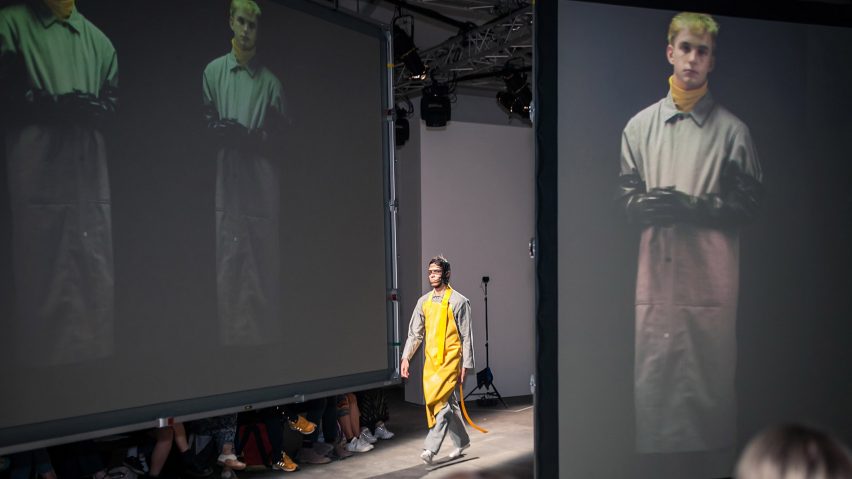
10 standout collections from the London College of Fashion's 2018 graduate show
Graduates showcased their designs on a physical catwalk and in virtual reality at this year's London College of Fashion BA Fashion show. Dezeen's Gunseli Yalcinkaya picks her top 10 collections, including punk-inspired knitting and school-uniform-style tailoring.
The London College of Fashion (LCF), part of the University of the Arts London, put on its graduation show at Oval Space in east London.
Aiming to reflect the "cross-disciplinary and collaborative nature of the fashion industry", the collections were shown digitally as well as on the catwalk. It was broadcast live across numerous large-scale screens, thanks to the use of 360-degree video technology.
"The fusion of catwalk and exhibition, physical and digital, was devised to create a more cinematic, multi-perspective environment in which to view the array of work we do at London College of Fashion," said LCF creative director Robert Phillips.
"We are continually challenging what a fashion presentation is," he explained. "I wanted the audience, both online and on-site, to feel and be in an environment that – regardless of where you look – there is something to view."
The audience were also offered virtual-reality headsets, allowing them to access a range of virtual worlds.
"I spent a lot of time thinking about the digital world – the way we connect and visually consume, share and link content," said Phillips.
"In today's world, we don't just look at products alone in their purest physical form," he added. "Our gaze and our imagination in today's visual market needs more than that, so we feel more connected and invested."
Here's our guide to the 10 best designs from the class of 2018:
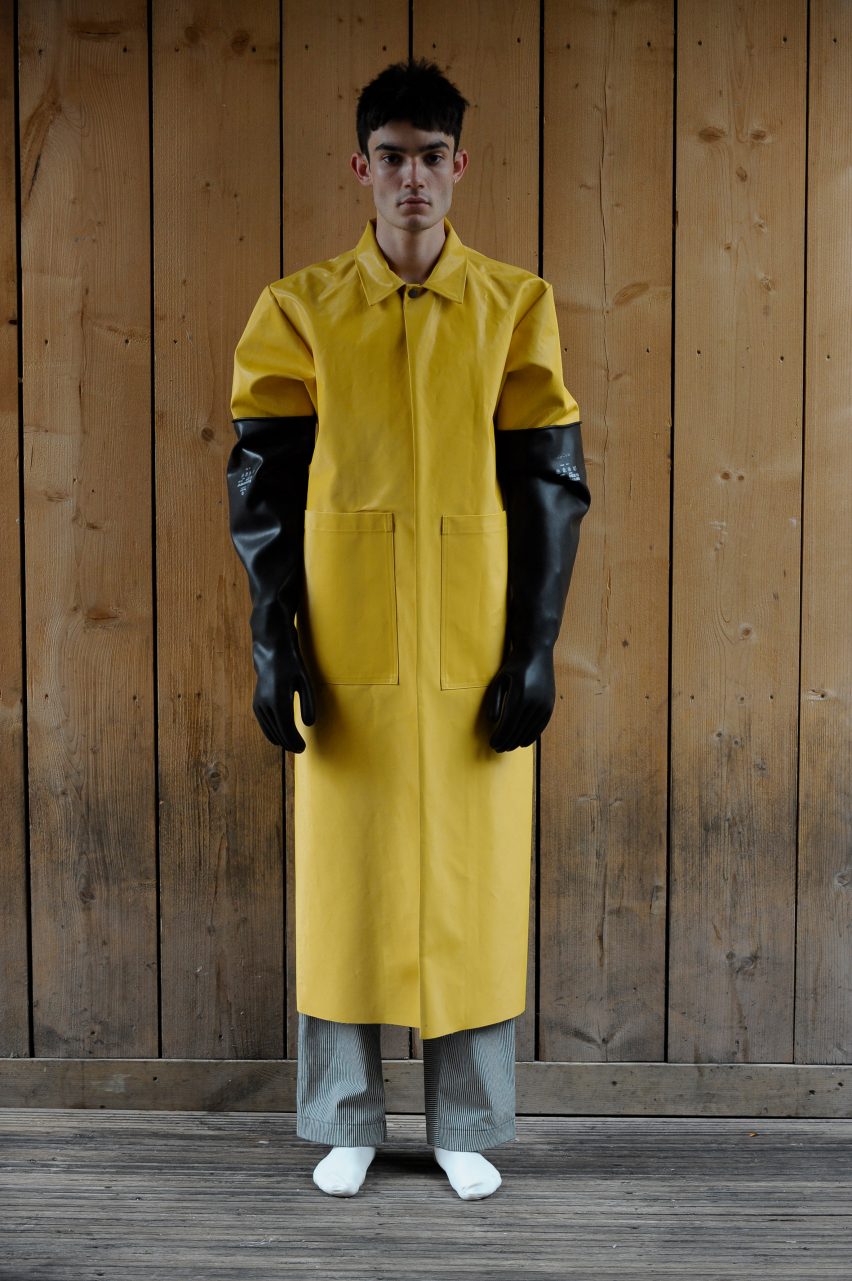
Thomas Chandler
Menswear design graduate Thomas Chandler paired rubber-coated nylons and striped denim in his collection.
"My collection came from looking into men at sea whilst keeping functionality in mind and keeping colours and fabrics to a minimum," he said.
"The fabrics I used were kept to a small selection – mainly hickory striped denim in black and white and rubber coated nylons, which I bonded to a cotton drill to create a lightweight version and a heavyweight version."
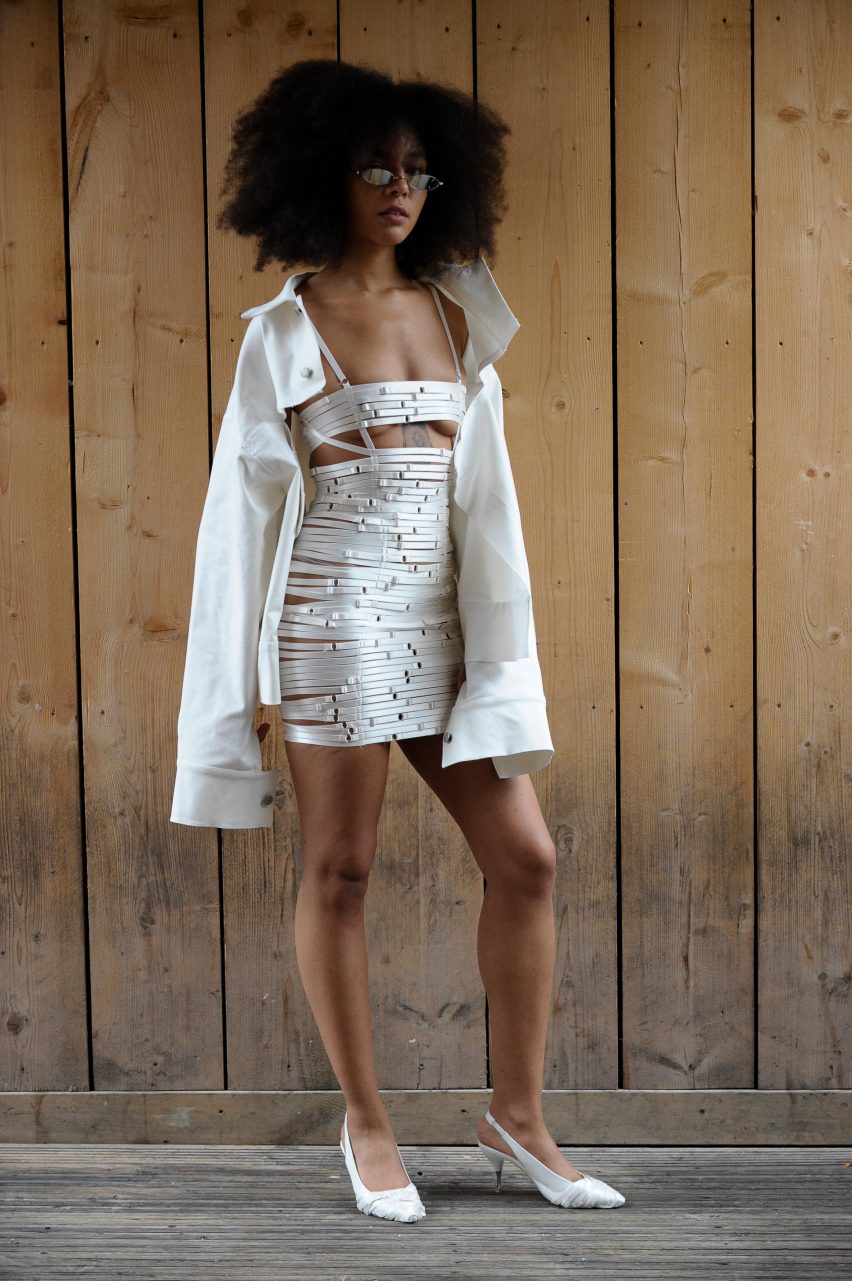
Amari Carter
Womenswear graduate Amari Carter wanted to explore the feeling of vulnerability experienced by women in her designs.
"Undressing may be the means by which we cast off our public identity and become our private selves," Carter said. "Key pieces are made out of bra straps, reiterating the inside being shown on the outside, revealing our most inner selves."
"The level of transparency that you see from the strapping is to convey the hiding of your own insecurities, yet failing to communicate your inner vulnerability," she explained.

Amelia Skarpellis and Alexandra Anderson
Embroidery graduate Amelia Skarpellis and textiles graduate Alexandra Anderson teamed up on a collection to embody a "new generation of punk".
Combining traditional knitting techniques with modern materials like elastic, nylon and paper yarn, the designers wanted to create genderless forms while nodding at the rebellious subcultures of the 1980s.
"The collection celebrates and promotes positive social change by creating a new generation of genderless fashion for today's society," said Skarpellis.
"The importance of texture, colour and illustration is at the heart of the collection alongside the use of modern forms of embroidery such as CAD in combination with traditional forms of time honoured hand beading to create imagined and vibrant denim creations."
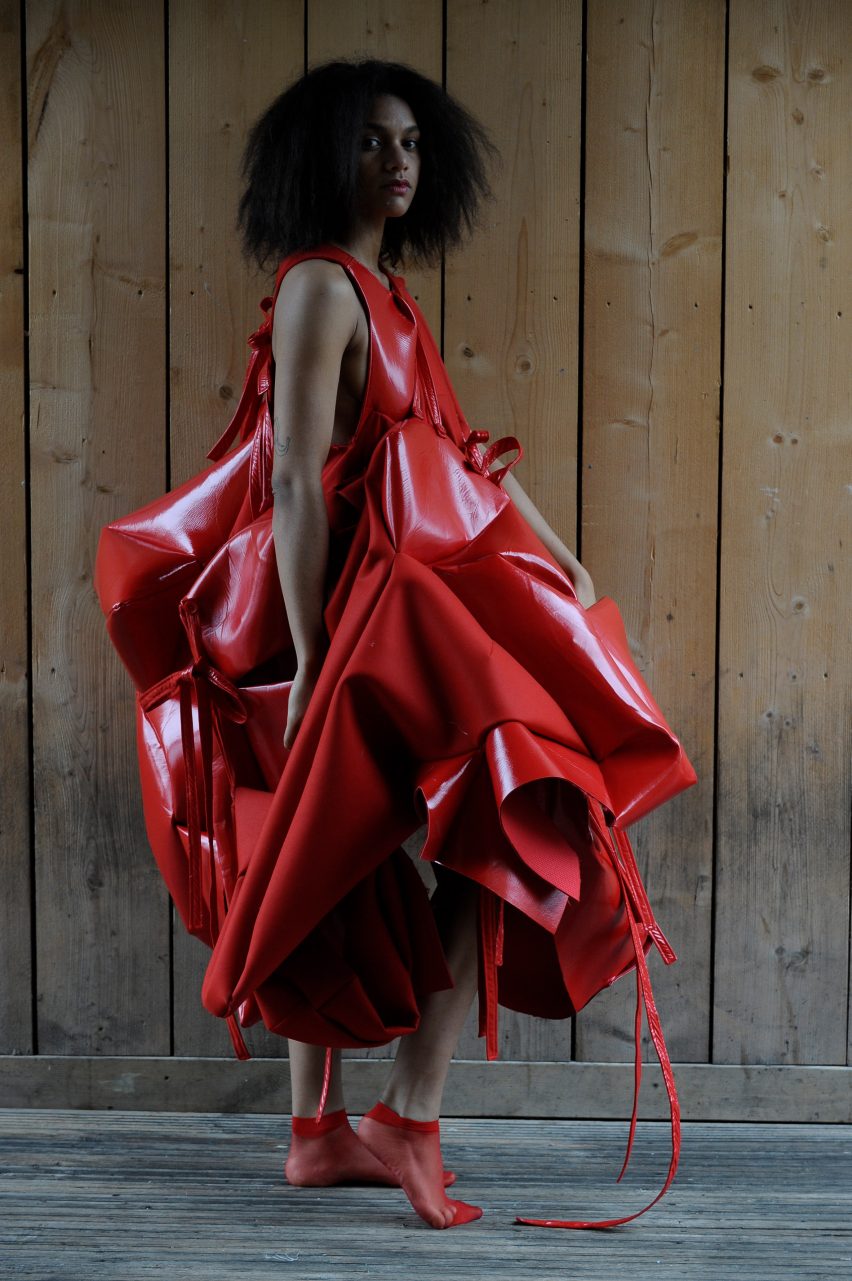
Carolina Raquel
For her collection, Carolina Raquel was inspired by her emotional relationship with her own clothes and the memories attached to them.
"The collection took inspiration from a vast visual experimentation with my grandmother's long lost clothes and clothes from my friends' wardrobes that they simply never used – clothes that apparently failed its main purpose," she said. "I played with the contrast between textile-orientated surfaces and more technical ones."
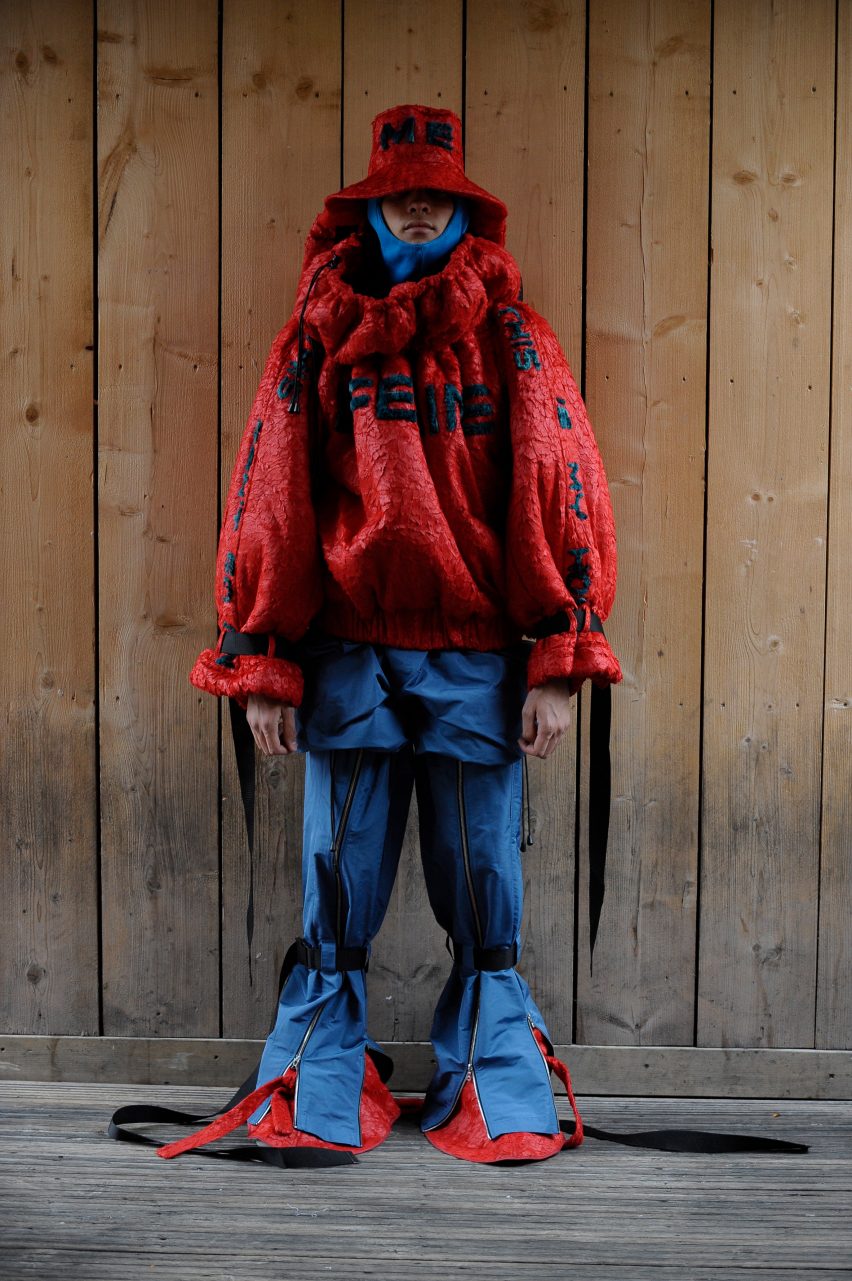
Lingfeng Zhu
Menswear design graduate Lingfeng Zhu took to studying the history of displacement – a topic that he sees as evident in contemporary society.
"Some of the waterproof fabrics in this collection are inspired by the humid environment where displaced people are living. I used the texture of velboa fabric because I wish society can be warm, soft and cosy for them. Also, the bright colours attract peoples' attention," he told Dezeen.
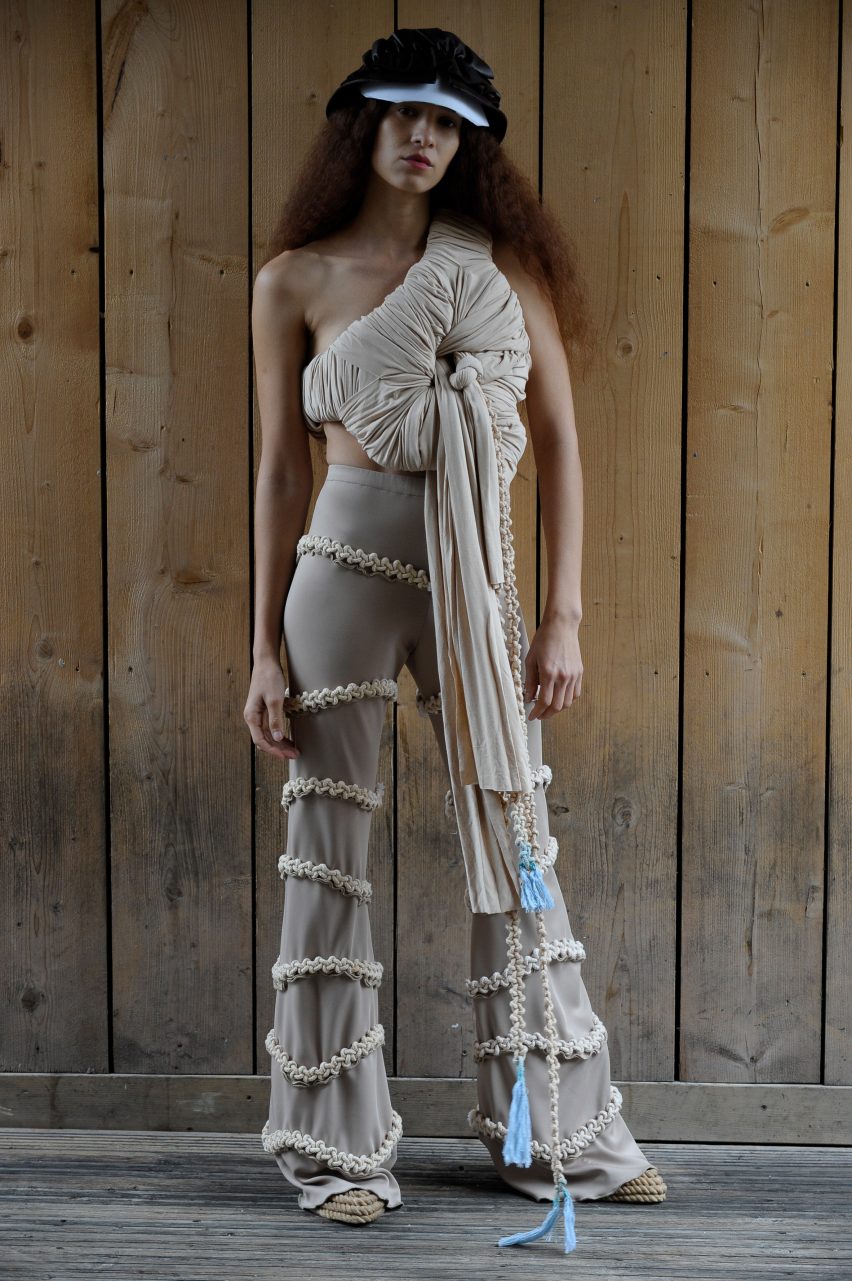
Marine Beybudyan, Mia Anderson and Ziling Tang
The knotted and distorted shapes in this collection are inspired by personal experiences of mental illness. Called Entanglement, it is made from 100 per cent hand-dyed cotton rope, using a process called macrame – a knotting technique that Anderson chose for its therapeutic properties.
"This collection is meant to make you feel that you are either trapped or uncomfortable in yourself," she said.
"The knotted garments give off the feeling of being trapped and the jersey garments hug tightly around the body. The tight layered jersey is meant to represent the anxiety one can feel and layers of feelings on top of you."
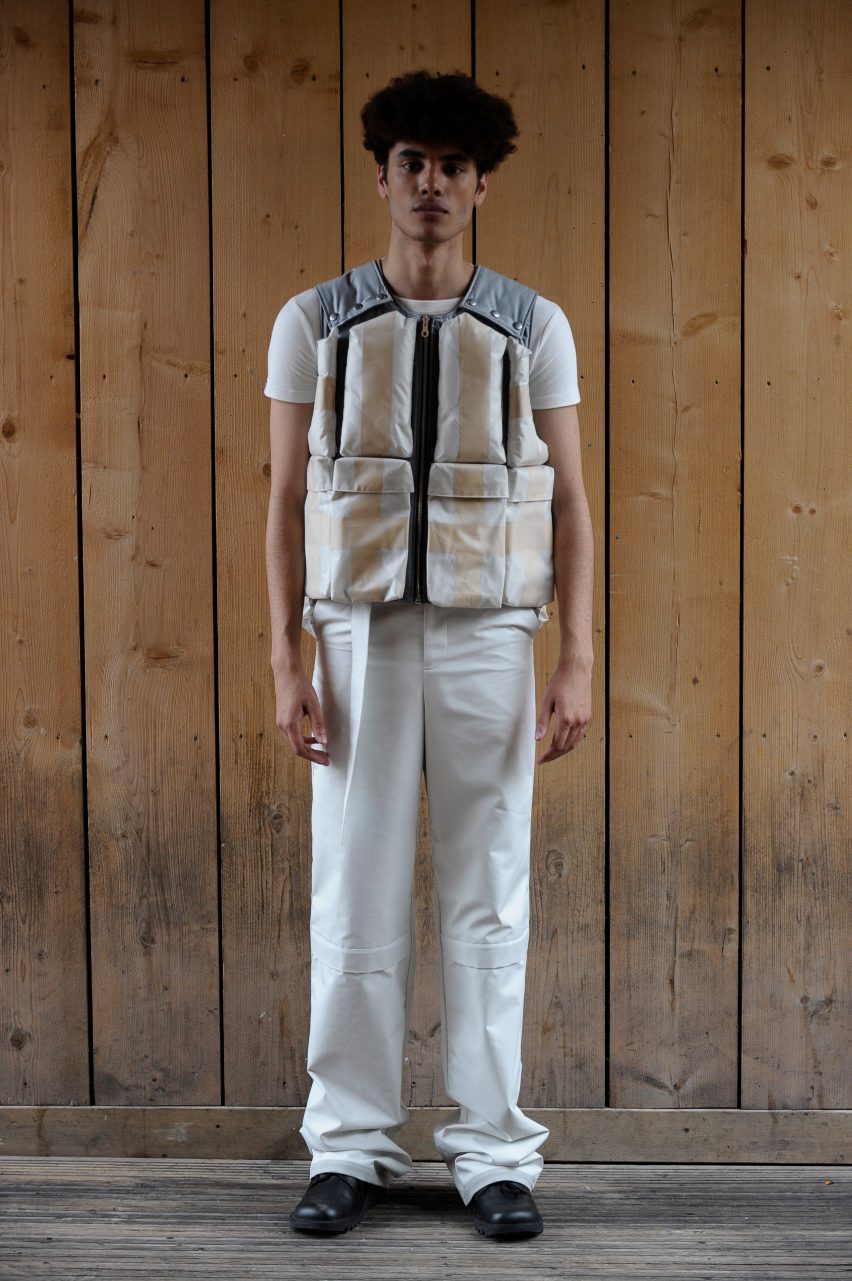
Hangzi Liu
Methods of self-protection inspired this collection by menswear graduate Hangzi Liu. He used a combination of soft fabrics and wool, which he wove together with ribbons to create a "soft armour".
"Humans use every means to protect themselves from harm. Many people change their shape in order to conform to the popular aesthetics, or to control their behaviour within the bounds of common sense," said Liu.
"I'm trying to make a design that suits all types of people and makes them look unique."
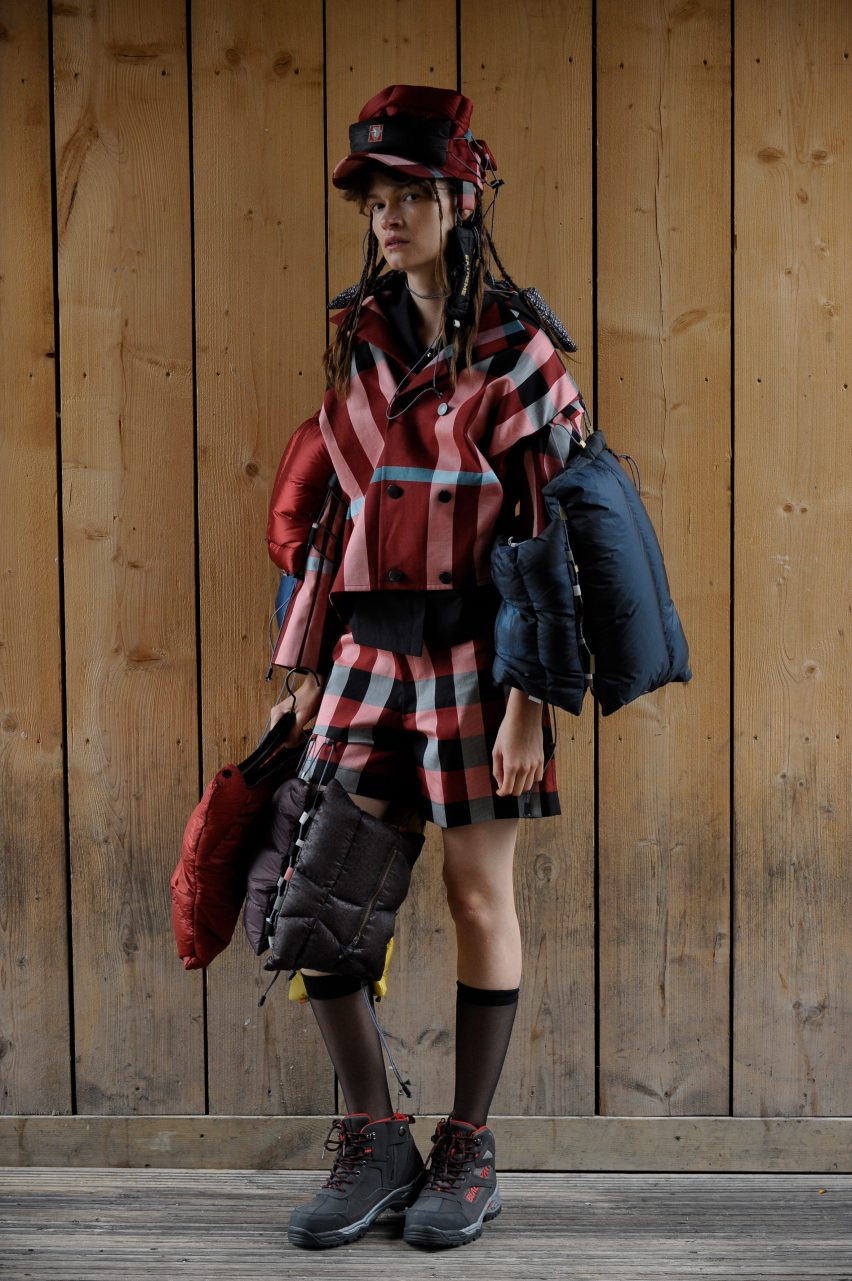
Mujiko
Inspired by her old school uniform and children's clothes, Muji Ko opted for a loose-fit silhouette with coordinated colours.
"Asymmetrical elements were added to the school uniform to reflect children playing with each other while pulling their clothes. The asymmetrical elements reflect a scene where children are heaving and pulling up the anchor before sailing out to sea," said Ko.
"Just like a fender connected to a boat, I tied fun parts from a recycled Black Yak goose-down padded jacket and windbreakers to the stretched uniform by twisting and pulling. I also made little purses using hangers," she explained.
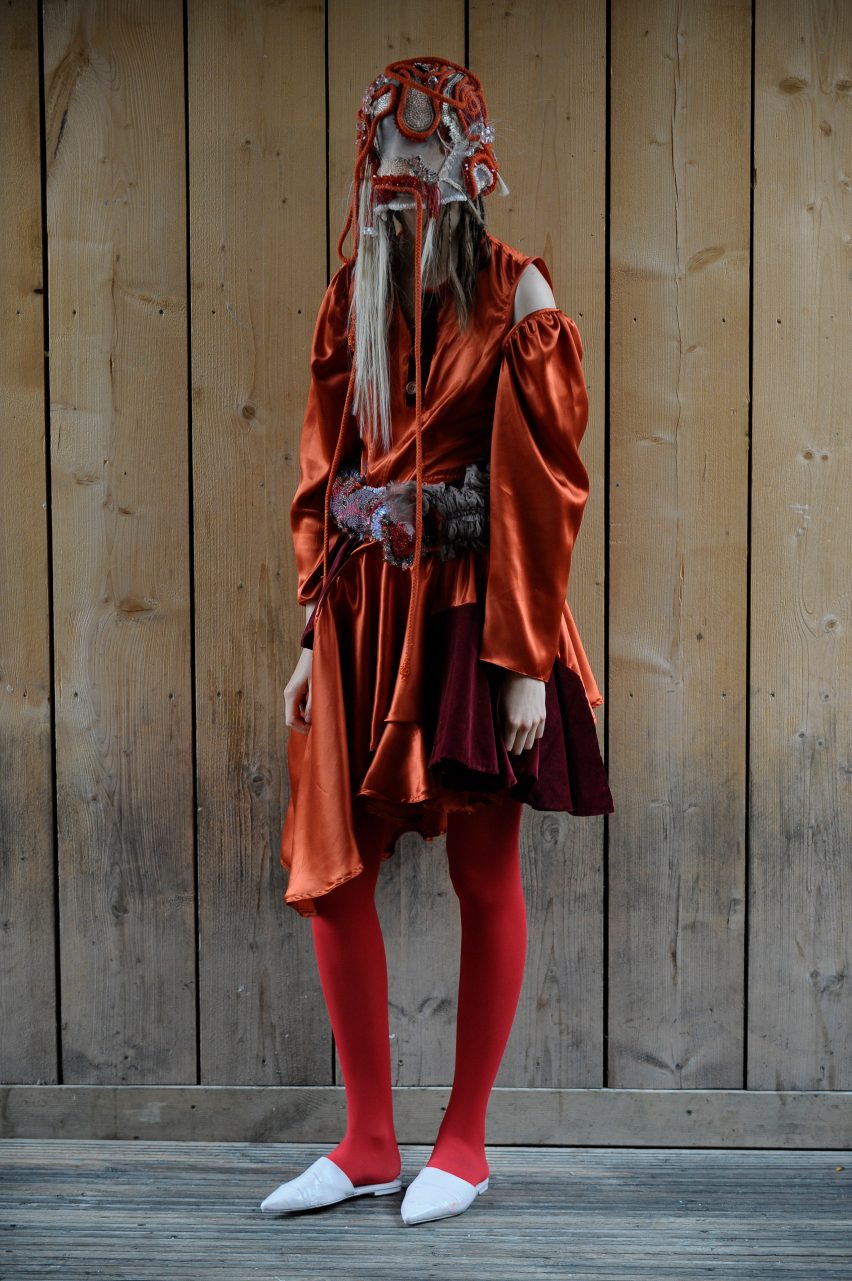
Siar Hawzhen, Zhen Qi and Katie Westwood
Womenswear graduate Siar Hawzhen wanted to ridicule the norms of society with his collection of "misplaced and exaggerated" clothing.
"Referencing my childhood, certain parts of garments are misplaced, exaggerated and shifted to make you look twice at it before commenting," he said.
When designing her headpieces for the collection, embroidery graduate Zhen Qi was inspired by the cartoon The Chinese Zodiac and club scene icon Leigh Bowery.
"I used the tights, elastic fabrics, beads, Swarovski, shiny wire and yarn for the braiding and embellishment," she said.
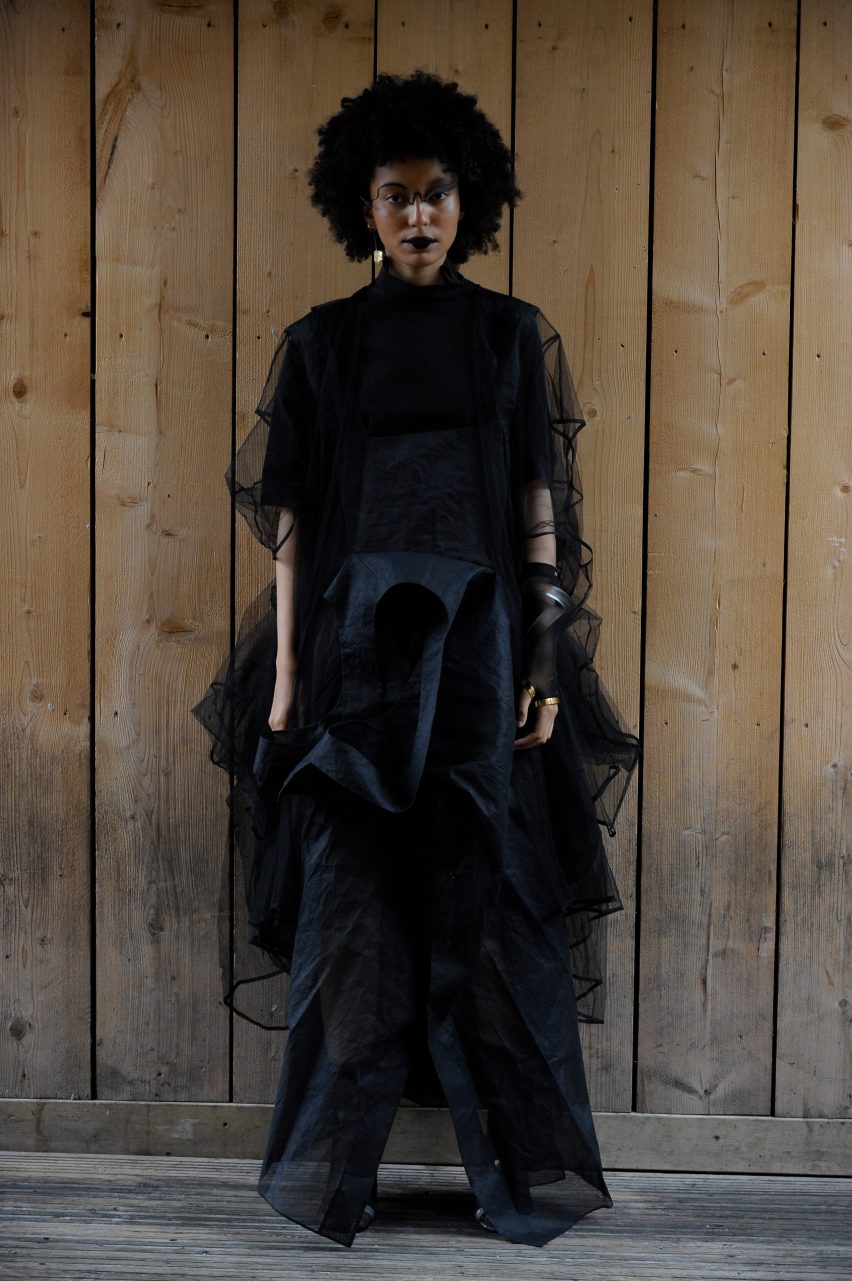
Haoxin Cheng and Waiyan Choi
Inspired by the work of Korean artist Do Ho Suh, Haoxin Cheng wanted to create a piece that evoked the human shadow.
"I wanted to design the garments as a passageway for people to explore the unique identity of themselves as well as creating their own shadow," Cheng said.